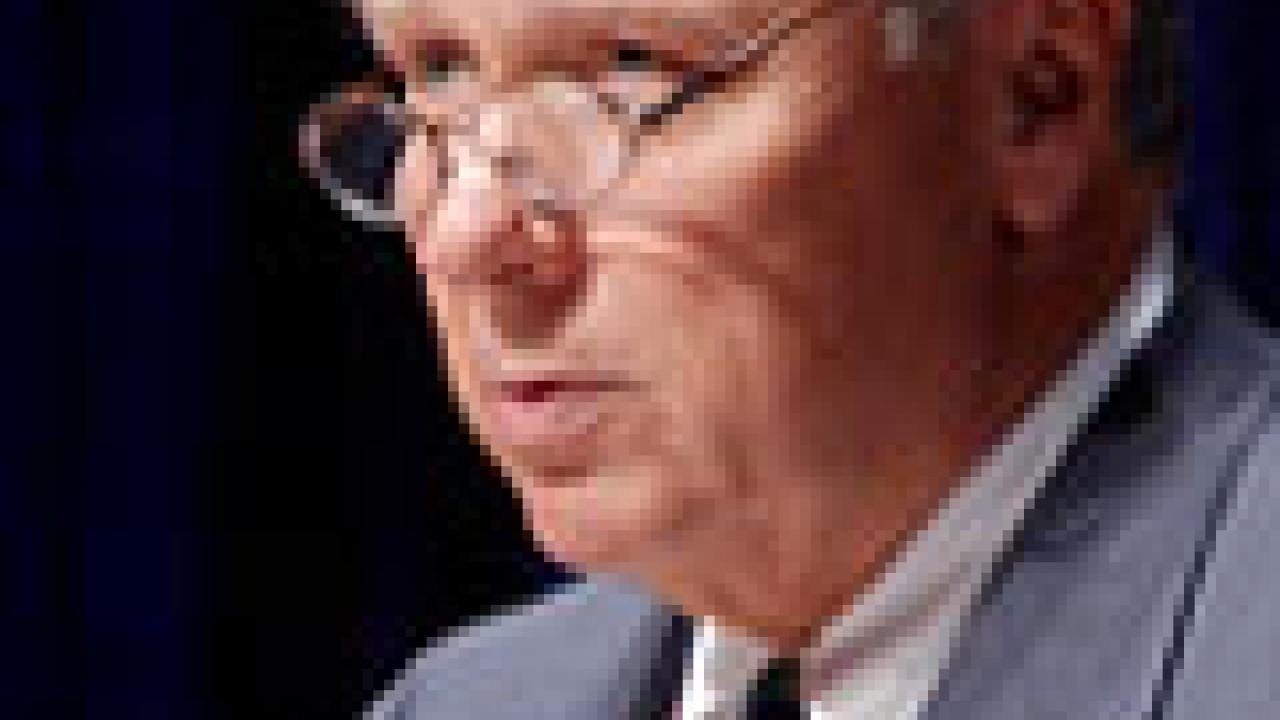(Editor's note: On Nov. 24, UC Davis Medical Center Chief Executive Officer Robert Chason sent to employees a letter reviewing pressing issues and offering a strategy for the center's future. Edited for length, his letter is reprinted here.)
Dear Colleagues,
While news about California's financial circumstances remains ominous, it is important for us to focus on the future and a day when the financial position of the state will once again become positive. For now, we must be aware that we are part of a larger organization and that many of the problems affecting the state will in turn affect the university and the medical center.
I think there are very few who would argue the success of the health system's previous strategies: the development and growth of the primary care network, our outreach to rural hospitals, and the many collaborations that have resulted in major successes in our teaching, research and clinical programs. ... The growth of our school's research funding, which now tops $100 million annually, brings new jobs as well as new advances in medicine. We should all be very pleased with what we have accomplished here together.
But our successes have come at a price. We've had program reductions in some areas and considerable sacrifice on the part of staff and faculty who have worked hard to keep pace with ever-increasing demands. We face a number of serious issues, such as patient access, customer service, nursing and technical staff shortages, patient safety and a host of other challenges that are common throughout the health-care industry. Addressing these problems will place greater strain on our financial capacity. Yet successful solutions are critical to our continued success in serving the needs of this community.
One of the major problems facing the university is the need for capital. Billions of dollars will be required to meet the university's and medical center's needs over the next decade. So the problem becomes how best to leverage the precious resources that are available to us now. We are not in a position to borrow additional funds when there are equal, or perhaps more compelling, needs elsewhere in the university.
The medical center cannot, however, afford to stagnate in the face of increasing competition. All the projects that are currently under way, or will be under way shortly -- the hospital addition, the Education Building, the Cancer Center expansion and additional research facilities -- must be completed in order to meet present needs. In addition, we have an increasing need for parking, capital equipment, and other research space to meet the growing needs of an increasingly successful faculty. So we must begin asking ourselves some fundamental questions: How can we best serve the current and future needs of our students, patients, faculty and staff? How large should we become? Should we -- can we -- expand into surrounding areas as the population grows? Should hospital beds dictate growth in the primary care network? Will limiting the size of the network cause adverse patient selection and diminish our contracting capabilities? Should we partner with other hospitals? ... In the face of shrinking resources from the state and county, how can we continue providing ever-increasing levels of service to the uninsured?
These are but a few of the questions we have begun asking ourselves as we plan for our future. ... One need look no further than today's news to understand the magnitude of the problems facing the state. ... And so we must once again identify ways to utilize our own scarce resources to effect the changes that will inevitably be required of health care, both regionally and nationally.
So where do we go from here? We begin by attempting to identify all the elements of the various issues we have identified. ... As a first step, a number of key propositions have been developed, and we have begun formulating questions around each. The following propositions have emerged as key considerations in developing our strategies:
Proposition I -- Our mission should be clearly stated and understood.
Proposition II -- Additional borrowing is not currently an option.
Proposition III -- It is unlikely we will grow beyond 602 beds at the Sacramento campus.
Proposition IV -- Partnerships are critical to our future.
Proposition V -- Contracting continues to be a priority.
Proposition VI -- We must continue to grow our research programs.
Proposition VII -- The hub of the medical school will move to the medical center campus with all four classes centered in Sacramento, and our teaching programs will be expanded and enhanced.
Proposition VIII -- We will continue to be affected by political decisions at the state and federal levels.
While some or all of these propositions may appear obvious, how we proceed could have profound effects on our ability to achieve our mission and serve our students, our patients and our community. The health-care landscape is constantly changing, so we must be vigilant in our efforts. (Administrators, faculty and I) are currently involved in a dialogue about these issues. We will keep you informed as discussions develop.
-- Robert E. Chason
